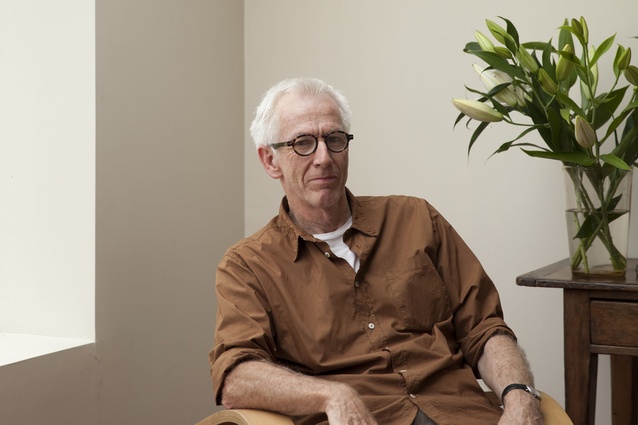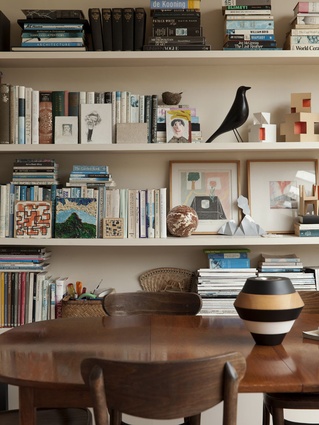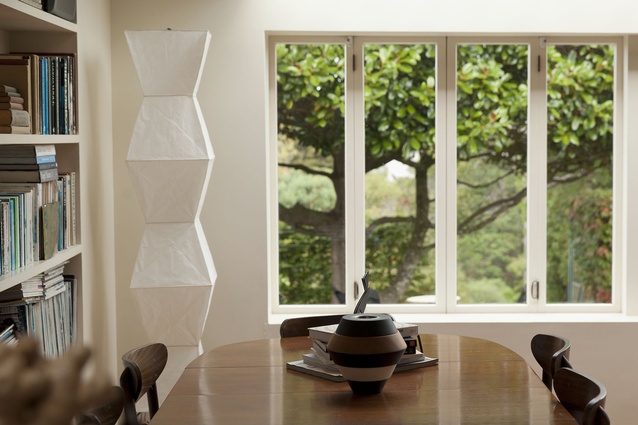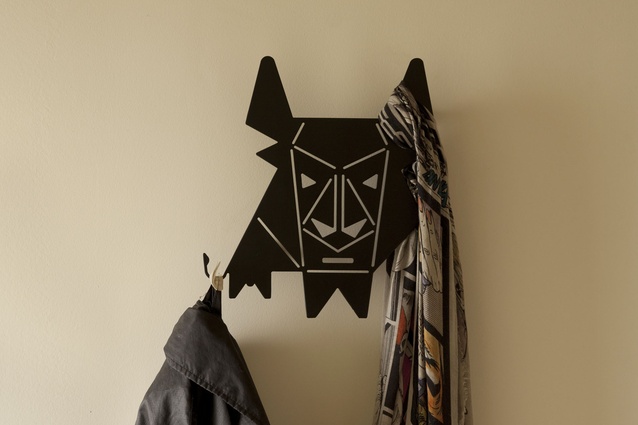Meet your maker
When asked to describe Chris Pearson recently, a friend said he was “a multi-disciplinary creative resource”.
“It is slightly pompous but what it really means is I come up with creative solutions for all sorts of different projects,” says Pearson.
He is an artist, art director, freelance creative, photographer, product designer and animator, so the description does encapsulate Pearson’s many talents. Recently, the 62-year-old set to developing a range of design objects for the home but, out of choice, he says, he never does just one thing at once.
So it fits then, that Pearson’s Parnell home, a classic villa he has shared with his wife Louise for 28 years, is an expression of a multitude of different ideas, tastes, styles and mediums that combine to create simple, yet engaging spaces. The sun-lit living area at the rear of the dwelling features two Garth Chester 1950s’ Curvesse pressed-plywood chairs, which Pearson says encompass his own design ethic: simplistic yet skilfully crafted and incorporating a degree of technical difficulty. A floor-to-ceiling bookshelf is well stocked with titles that share space with Pearson’s own drawings and paintings and those of other artists.
Pearson’s Sylvette, a powder-coated aluminium wall hanging, graces the entrance area; he describes this work as “Picasso-esque in a way” as it was inspired by images Picasso created of his famous high-ponytailed model Sylvette.
“The work I do is often about achieving a visual result that has a degree of technical complexity about it. The wall hangings are variations of cubist imagery. I think Picasso once said something along the lines of ‘If I can steal it, then I will’ so I felt it was appropriate to use his image in
this situation.”
Pearson trained at AUT University’s School of Art and Design before moving into advertising, from where he progressed to the range of creative pursuits in which he is involved today. While he has, for a long time, been interested in drawing, collage and painting, it is only in the last few
years that Pearson became interested in the idea of creating three-dimensional objects. It’s a challenge far more difficult than it is to create a two-dimensional piece of art, he says.
Pearson’s design objects (which are available from galleries throughout New Zealand) include a modernist take on the tui and kereru, vases and, most recently, a double-tiered table. The striking black-and-white Silhouetta vases are part of Pearson’s latest range and each of the folded aluminium, powder-coated objects features geometrically diverse shapes on one face, while deceptively, the other has just a glass tube in which the stems sit.
All of Pearson’s objects are made in collaboration with a manufacturer, whether that is the “fabulous old woodturner” with whom he worked to develop his earlier vases or the industrial laser cutters who are creating his most recent pieces.
“The interesting and difficult thing about [laser cutting and powder coating] these sorts of objects is that they are both really quite industrial processes, so to achieve the sort of precise finish I require is not always easy,” he says. “But I find the finished result of a laser-cut item pleasing in that it is smooth and clean.”
Another piece of Pearson’s, entitled The Dancing Lovers, is a uniquely articulated coat hook. Made of aluminium, wood and lacquer, the limbs of the female and male figures are designed to move as necessary to allow for a range of positions, which can hold varying items.
For Pearson, the ideas behind his work come to him unexpectedly: “Walking, for example, you see so much more than you do when you are driving; you get into a different sort of zone. My work is so varied it is hard to pin down exactly where the ideas come from. But the next idea is out there – it is just a matter of looking and seeing.”
Drawing is a central part of Pearson’s creative process and a large part of his earlier work is based, in some form, on drawing. It is, he says, like thinking in slow motion: “When you are drawing, there are so many possibilities as to what can happen.”
Working from his home and a Parnell studio, Pearson says the variety of his occupation is what keeps him inspired: “One minute I can be working on an animation, and the next I’m working with a crayon.”















